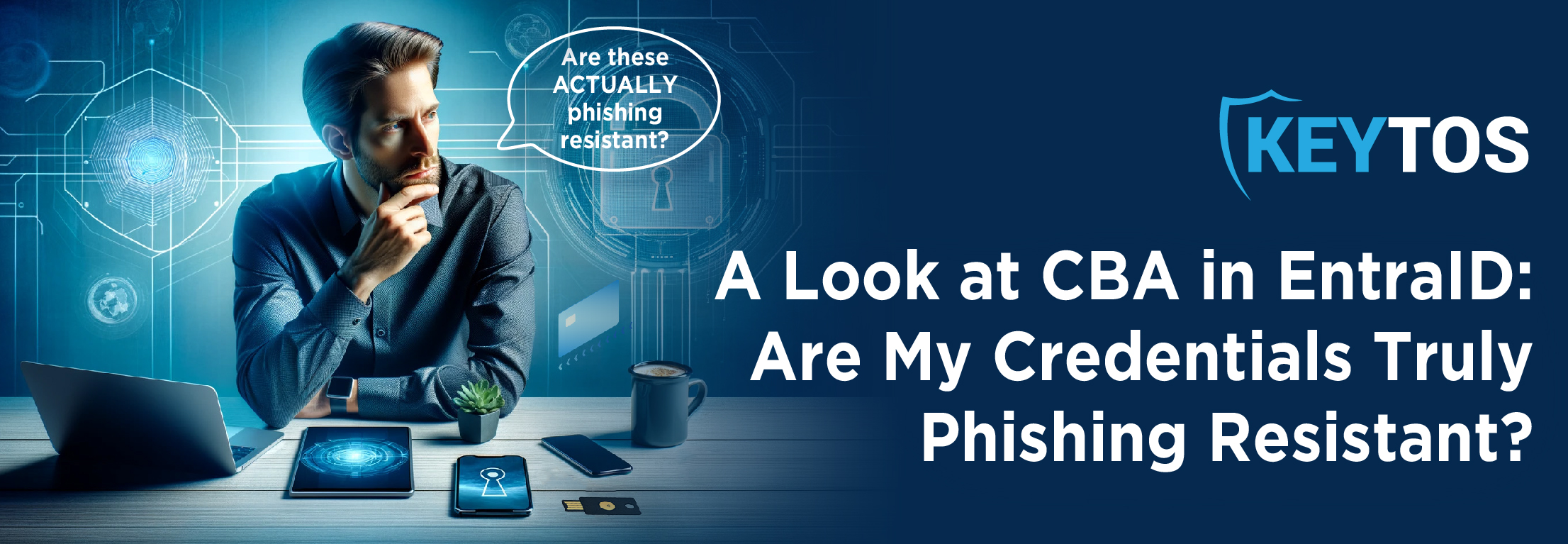
A Look at CBA in EntraID - Are My Credentials Truly Phishing Resistant?
A Look at CBA in EntraID - Are My Credentials Truly Phishing Resistant?
Relying solely on passwords for authentication into services like Entra Identity can significantly compromise an organization’s security posture. Passwords, by their very nature, are vulnerable to a wide array of attack methods, including phishing, brute force, and social engineering tactics. These weaknesses not only make passwords a favored target for hackers, but also introduce unnecessary risk and complexity in managing and securing user access. By persisting in the use of passwords for authentication, individuals and organizations are not leveraging the advanced security features and phishing-resistant authentication methods available with Entra Identity. Transitioning away from passwords to more secure and resilient authentication methods can significantly reduce the risk of security breaches and improve overall cybersecurity.
What Are Phishing-Resistant Credentials?
Phishing-resistant credentials or phishing-resistant authentication refer to security mechanisms designed to prevent phishing attacks, which are fraudulent attempts to obtain sensitive information such as usernames, passwords, and credit card details by disguising as a trustworthy entity in digital communication. Traditional authentication methods, like passwords and simple two-factor authentication (2FA) codes sent via SMS or email, can be vulnerable to phishing attacks. Attackers can create fake login pages and trick users into entering their credentials, which the attackers then capture. Phishing-resistant authentication methods aim to mitigate these risks by using stronger, more secure forms of verification that are harder for attackers to intercept or replicate. Mechanisms such as FIDO2 and CBA have emerged as the leading mechanism to ensure your organization’s credentials and data remain safe from those dirty little hackers trying to steal our stuff.
Is Certificate Based Authentication in Entra Phishing Resistant?
TL;DR: Yes, Certificate-Based Authentication in Entra Identity is considered to be phishing resistant. It works by leveraging digital certificates to authenticate users or devices, thereby eliminating the need for passwords. This method is inherently phishing-resistant because:
No Passwords to Phish: Users authenticate by proving possession of a private key corresponding to a public key in a digital certificate that the server trusts. Since there’s no password exchange, there’s nothing for a phishing attack to capture.
Strong Assurance of Identity: The use of digital certificates provides a strong assurance of the identity of the entities involved in the communication. Certificates are typically issued by trusted Certificate Authorities (CAs) after verifying the identity of the certificate requester, which adds a layer of trust.
Mutual Authentication: Just like in other scenarios where CBA is used, Entra Identity can be configured to require mutual authentication, ensuring that not only the client proves its identity to the server, but also the server to the client. This can help prevent man-in-the-middle attacks, a common phishing tactic.
Enhanced Security Protocols: Integration with security protocols like TLS (Transport Layer Security) ensures that the authentication process is encrypted and secure, further reducing the risk of phishing or interception.
Microsoft’s implementation of CBA in Entra Identity is designed with security best practices in mind, aiming to provide a secure and user-friendly authentication experience that minimizes the risk of phishing and other common cyber threats. Organizations leveraging Entra Identity with CBA can significantly enhance their security posture by reducing reliance on passwords, which are often the weakest link in security chains.
However, while certificate-based authentication is more resistant to phishing than traditional username/password schemes, it is not completely immune to all forms of cyber attacks. For example, if an attacker gains physical access to a device containing a private key or if the private key is not securely stored and is somehow compromised, the attacker could potentially impersonate the user. Additionally, the user experience and management of certificates (such as renewing them before they expire) can be challenging, which might introduce vulnerabilities if not handled properly.
Implementing CBA in EntraID – Getting Started
Embracing passwordless methods directly addresses the most pressing threats that compromise organizational integrity, drastically reducing the risk of breaches that have become all too common with traditional password systems. The tangible return on investment (ROI) from adopting passwordless solutions extends beyond enhancing security measures. It also offers substantial financial benefits, including operational efficiencies and potential savings on cyber insurance premiums, given the lower risk profile of such systems.
For organizations looking to embark on this transformative journey towards zero trust, the Keytos security team stands ready to guide you through every step of the process. Whether you prefer a direct conversation to tailor a passwordless strategy that best fits your needs or choose to explore at your own pace through our extensive documentation, we are here to support you. Our YouTube channel is rich with tutorials and step-by-step guides, meticulously designed to provide you with the knowledge and tools necessary for a seamless transition. Additionally, our documentation on how to implement EZCMS for passwordless authentication offers granular, actionable insights to ensure a smooth integration into your existing systems. We invite you to reach out at your convenience to discuss how we can help secure your operations against the cyber threats of tomorrow. Hope to chat soon!


